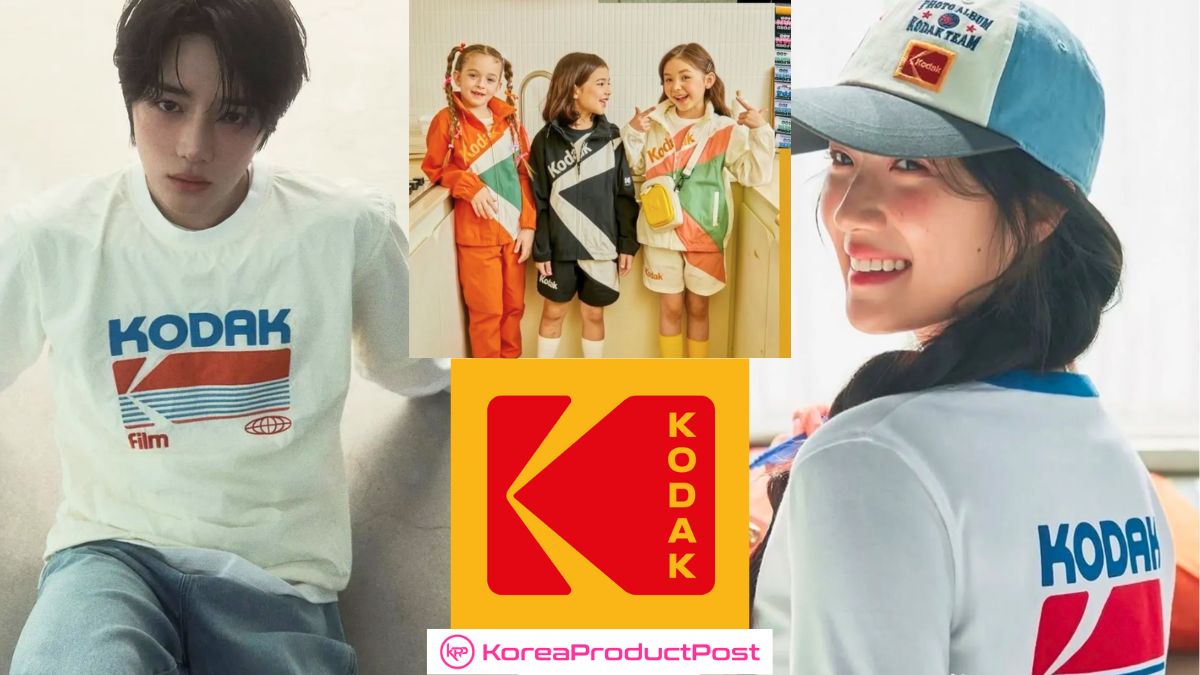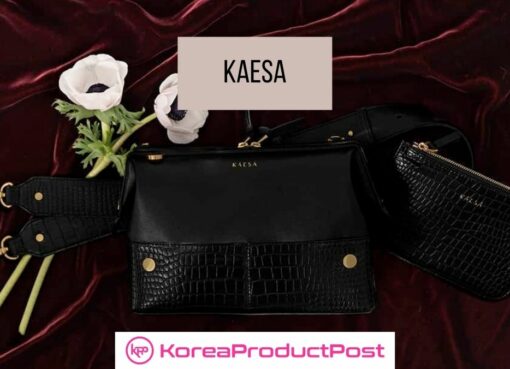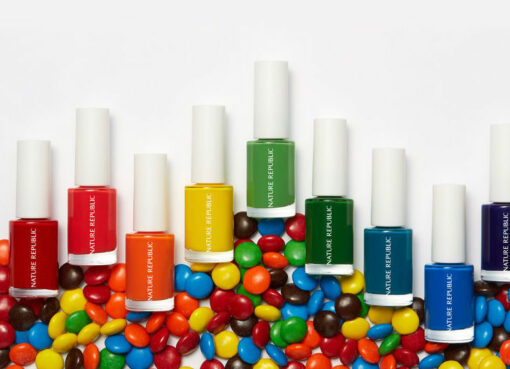Once a film giant, Kodak is now a fashion hit in South Korea. Learn how licensing, culture, and the newtro trend gave it a surprising second act.
Kodak once dominated the photography industry throughout the 20th century. Its name was closely linked to capturing memories, and for decades, it held a near-monopoly on film products. But this strong legacy could not protect Kodak from change. When digital photography took off in the late 1990s and early 2000s, Kodak did not adapt quickly enough. The company declared bankruptcy in 2012. It shows that even top brands can fail if they fail to keep pace with new technology and shifting customer habits.
Today, Kodak is no longer a leader in photography technology. Although it still produces photography products, the brand is not nearly as visible in the United States.
But in South Korea, the Kodak story is very different. Rather than fading into obscurity, Kodak has undergone a surprising transformation. Kodak has reemerged as a fashion-forward lifestyle brand, embraced by young Korean consumers for its nostalgia, authenticity, and retro appeal. Its bold colors, vintage logo, and ties to memory-making have gained new relevance through apparel and accessories.
This resurgence is not accidental. It reflects a broader shift in Kodak’s business strategy, particularly its focus on brand licensing as a revenue driver. It also aligns with a uniquely Korean cultural trend known as “newtro,” which combines modern sensibilities with retro inspiration. Understanding the unexpected second act of Kodak in South Korea offers valuable insight into how legacy brands can reframe their identities and tap into new markets, even after major setbacks.
Kodak’s Rise, Fall, and Reinvention
The Origins
Kodak’s roots date back to 1888, when George Eastman introduced the first simple camera. He revolutionized photography by making it accessible to the general public. For most of the 20th century, Kodak was a dominant player in the global imaging market. It held strong intellectual property in film technology, pioneered consumer photography, and enjoyed widespread recognition as a trusted and innovative brand. At its peak, Kodak controlled nearly 90% of film sales in the U.S. It was one of the most valuable companies in the world.
The Fall
However, the company’s downfall was not due to a lack of foresight. Kodak was actually among the first to develop digital photography technology in the 1970s. The problem was strategic: rather than embracing the digital shift entirely, Kodak chose to protect its profitable film business. They ultimately delayed innovation in a market that was rapidly evolving. As digital cameras became more affordable and smartphones began replacing traditional point-and-shoot devices, Kodak’s core product lines lost relevance. The company’s revenue plummeted, and in 2012, it filed for Chapter 11 bankruptcy protection.
After restructuring, Kodak downsized and refocused on specialized markets like industrial printing, advanced materials, and chemicals. Though it still makes films for Hollywood niches and analog photography fans, the brand no longer leads in consumer tech. In 2024, Kodak reported $1.04 billion in annual revenue, a significant rebound from its post-bankruptcy low, but still far from its former scale.
The Rebirth
Despite these changes, Kodak continues to hold significant brand equity. The name remains widely recognizable, and its visual identity carries emotional weight for many consumers. Recognizing this, the company began investing more seriously in brand licensing around 2018. Rather than rely solely on its traditional business units, Kodak started to license its name for use across a broad range of consumer goods. This shift laid the groundwork for a surprising new chapter. And this one does not take shape in the U.S., but halfway across the world in South Korea.
Surprising Popularity of Kodak in South Korea
While its influence has waned in its home market, Kodak has adopted an entirely new identity in South Korea. It is now becoming a fashion and lifestyle brand. Today, there are over 120 physical retail stores across South Korea dedicated exclusively to Kodak-branded apparel and accessories. These stores offer a wide range of products, including t-shirts, hoodies, baseball caps, backpacks, sandals, and sundresses. The designs are modern but heavily influenced by retro aesthetics. They feature Kodak’s classic color palette, vintage logos, and typography that evokes its film-era legacy.
This popularity is not limited to niche communities or photography enthusiasts. Kodak-branded fashion has gained traction among younger Korean consumers, particularly those in their teens and twenties. Many see it as stylish, nostalgic, and culturally distinct from more generic streetwear labels.
But Why Is It Popular?
Part of the appeal lies in how Kodak fits into broader cultural trends in South Korea. Rather than being viewed as a defunct tech brand, Kodak is seen as an authentic piece of Western retro culture. The branding blends global appeal with vintage charm, giving it credibility in a fashion scene that values originality. The apparel goes beyond the logo, evoking Kodak’s legacy of memory, storytelling, and creativity.
In effect, Korean consumers have redefined what Kodak represents. Consumers no longer associate it with the fall of a once-dominant tech company; instead, they view it as a fresh symbol of cultural nostalgia reimagined for the modern era.
The Influence of “Newtro” Culture
One cannot understand the Kodak comeback in South Korea without examining the broader cultural movement, “newtro,” a blend of the words “new” and “retro.” This trend has picked up significant traction among South Korea’s Gen Z and younger millennials. They are increasingly into the aesthetics and sensibilities of the past, reinterpreted through a modern lens.
Newtro is more than just a fashion trend. It reflects a more profound cultural shift toward rediscovering analog experiences in a digital-first world. From vinyl records and cassette players to retro diner-themed cafes and vintage film cameras, Korean youth are embracing elements of the past. And it’s not out of nostalgia for their own experiences, but because of the authenticity and uniqueness these products represent. Within this framework, Kodak has found a natural place.
For Kodak, this cultural movement offers both relevance and a fresh platform to reintroduce its identity to a generation that has never known it as a camera company. Instead of being anchored by its past, Kodak is being redefined through it, by consumers who see value in its legacy, but no baggage.
Even Film Photography is Popular in Korea
Film photography, once thought to be obsolete, has experienced a significant comeback in South Korea. There is increasing interest among the younger generation in shooting on film. They aren’t looking for film photography for professional reasons, but they like the aesthetics and the overall experience. Kodak, as one of the most recognizable names in analog photography, benefits from this renewed interest. Its branding carries cultural weight and feels authentic in a landscape filled with digital saturation and short-lived trends.
The alignment between Kodak’s vintage identity and the principles of newtro has created a unique opportunity for the brand to thrive. Rather than being dismissed as outdated, Kodak’s visual language—its logo, fonts, and color scheme—is seen as stylish and meaningful. Korean consumers aren’t just buying clothes with a familiar name. They are participating in a broader cultural moment, one that celebrates the past while seamlessly blending it with the present.
The Business Behind the Brand: Licensing Strategy
Kodak’s popularity in South Korea isn’t solely the result of organic cultural alignment. Kodak also pursued a deliberate business strategy centered on brand licensing. It is a model in which companies generate revenue by lending their name, trademarks, and design elements to third-party manufacturers.
For Kodak, brand licensing has become a growing and increasingly important segment of its post-bankruptcy business. In 2024, Kodak generated $20 million in licensing revenue, representing a 35 percent increase from five years prior. This growth reflects the company’s intentional pivot toward monetizing its brand equity in categories far beyond photography.
Today, Kodak’s name appears on a wide range of consumer products. These include:
- Eyewear
- Paint
- Flashlights
- Binoculars
- Solar panels
- Apparel and fashion accessories
Kodak is not Just About Photography!
A broader marketing narrative guides this diversification. Kodak executives emphasize that the brand still stands for more than photography; it represents creativity, storytelling, and the preservation of memories. By anchoring its brand values in emotional themes rather than technical specifications, Kodak has been able to expand its licensing portfolio without appearing inconsistent or opportunistic.
In South Korea, these efforts have found a uniquely fertile market. Local companies with a deep understanding of consumer preferences have successfully developed Kodak-branded apparel lines that feel coherent, trend-aware, and aligned with the “newtro” movement. The visual consistency, using Kodak’s iconic red, yellow, and black color scheme, vintage logos, and film-era design cues, helps reinforce the brand’s identity even as it stretches into new product categories.
This licensing strategy provides Kodak with a relatively low-risk approach to staying relevant. By teaming up with manufacturers and retailers who know their markets, Kodak avoids running its own factories or stores. Instead, it gains brand visibility, cultural relevance, and steady licensing income, without the usual overhead of traditional product development.
For a legacy company still rebuilding from a historic fall, this model is both pragmatic and forward-looking. It leverages what Kodak still has, brand recognition and emotional resonance, without requiring it to compete directly in saturated or capital-intensive markets.
Mixed Reactions: Innovation or Brand Decline?
Kodak’s brand licensing success, particularly in South Korea, has sparked a range of reactions among business analysts and branding experts. On one hand, the move is seen as an innovative and adaptive response to changing market conditions. On the other hand, it raises questions about how far a brand can stretch before it loses its original identity.
Supporters argue that Kodak’s transformation reflects strategic flexibility. Instead of clinging to a declining core business, the company is leveraging its remaining assets—its name, its design, and its emotional association with memory and creativity—to build new revenue streams. In a global market where consumer attention is fragmented and brand loyalty is difficult to maintain, this kind of repositioning can be both profitable and sustainable when done thoughtfully. From this perspective, Kodak’s success in fashion and lifestyle is a form of brand evolution, not abandonment.
There is some merit to both sides. Kodak may seem to stray far from its heritage by entering categories like paint and solar panels, but grounding the brand in emotional values—such as creativity, storytelling, and visual expression—helps make these extensions feel more coherent. Still, the further a brand strays from its origins, the greater the risk that it becomes diluted or confused in the minds of consumers.
What is clear is that Kodak is no longer trying to return to its former market position. Instead, it is redefining what the Kodak brand means in 2025, both geographically and contextually. In South Korea, this redefinition has been largely successful, but whether it can be translated to other markets or stand the test of time remains an open question.
Why It Works in Korea (And Might Not in the U.S.)
Kodak’s success in South Korea underscores how cultural context can significantly influence the perception and viability of a brand.
In the U.S., Kodak is still primarily associated with missed opportunities and outdated technology. For many American consumers, the brand evokes memories of film rolls, disposable cameras, and a company that failed to keep up with the digital era. Despite its efforts to rebuild, Kodak remains tethered to its past in a way that limits its relevance in today’s highly competitive consumer market.
In South Korea, however, the Kodak brand has been recontextualized. Younger consumers there do not associate Kodak with failure—they associate it with retro aesthetics, emotional storytelling, and cultural coolness. Many of them were not old enough to witness Kodak’s fall, so the brand carries no negative legacy. Instead, it represents something authentic, global, and visually distinct.
Fashion and Gen Z in Korea
The Korean fashion market is exceptionally responsive to trends rooted in visual identity and nostalgia, making it a fertile ground for a brand like Kodak to thrive. The country’s retail and design industries are also adept at translating global brands into culturally resonant products. The Kodak stores in South Korea are not museum pieces or ironic throwbacks—they are thoroughly modern fashion retailers that understand how to use legacy branding to create something new and desirable.
Another key factor is the strong influence of youth-driven subcultures in South Korea. Gen Z consumers actively follow trends that blend analog and digital culture, and they often seek products that offer a sense of uniqueness and personal expression. Kodak’s branding, with its bold graphics and emotional connotations, fits naturally into this environment. It also benefits from the broader “newtro” movement, where past and present merge into something that feels both familiar and fresh.
Why it Won’t Work in the U.S.?
In contrast, efforts to reposition Kodak in the U.S. face steeper challenges. The U.S. consumers have fragmented preferences, show less brand loyalty, and form a more complicated emotional connection to Kodak. They often see it through the lens of what the company lost rather than what it still represents. Without a strong cultural movement like newtro to support a rebranding effort, Kodak’s attempts at relevance may continue to feel like nostalgia-driven marketing rather than a genuine reinvention.
Final Thoughts: A Case Study in Global Brand Reinvention
Kodak’s unexpected resurgence in South Korea offers a compelling case study in how legacy brands can adapt, survive, and even thrive long after their core business has declined. It shows that brand equity, when thoughtfully repositioned, can become a powerful asset, particularly in markets where historical baggage is minimal and cultural trends align with the brand’s foundational values.
For other legacy brands, Kodak’s strategy offers valuable lessons. It’s possible to rebuild relevance without returning to your original industry, but only if you’re willing to let go of past definitions and embrace new forms of value creation. Emotional clarity, visual consistency, and cultural timing are just as important as product quality when it comes to re-entering the consumer conversation.
Kodak may never regain its position as a technology leader, but it doesn’t have to. In South Korea, it has already evolved into something entirely different. It is a lifestyle brand rooted in history yet fully aligned with the present. Whether that success can be expanded or sustained globally remains to be seen, for now, Kodak’s story is no longer just about what it lost. It’s also about how it found a new place in the world.
If you’re looking to promote your products and connect with international buyers, please don’t hesitate to contact us.
Join us on an exciting journey to explore the vibrant world of Korean lifestyle – from the latest beauty tips to the hottest tech and so much more on Facebook, Twitter, LinkedIn, and Flipboard.









